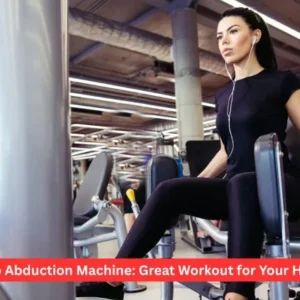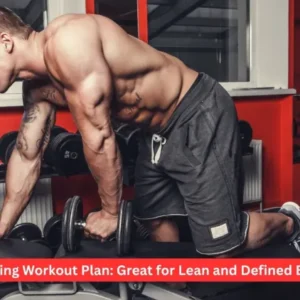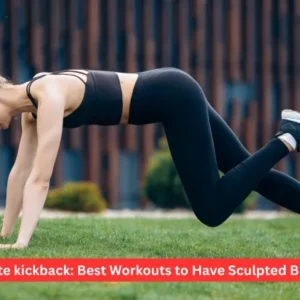Work on your hips and legs to loosen up after sitting all day. Calf stretches are significant, even though many forget to do them.
Many people forget to stretch the smaller muscles farther away from their core. You should still pay extra attention to your calves, though, because they are a big part of how your legs move, and if they’re tight, it can make other parts of your body hurt, feel off, or work less efficiently.
Stretching out those tight calf muscles can help loosen them up and ease the pain that comes with it. Before exploring some stretches, let’s understand this vital muscle group first. That way, you’ll know why giving it some TLC can be crucial.
What are your calf muscles?
Your gastrocnemius and soleus muscles make up your calf muscles. The gastrocnemius is most of your lower leg, and the soleus falls below it. These muscles meet at the bottom of your heel and knee.
Another small muscle called the plantaris runs between the gastrocnemius and the soleus. However, not everyone has one of these muscles; about 10% of people only have the gastrocnemius and the soleus.
The muscles in your calves help you do many everyday things. Plantar flexion happens when you point your toes, stand on your toes, or press down on the gas pedal in your car. They help build physical power, which is helpful for things like running and jumping. In addition, they work when you do lower-body compound movements like the squat or the deadlift as part of your strength training.
What causes tight, stiff calves?
Calves get tight over time because you don’t move your legs through their full range of motion. Seated at a desk all day will keep your knees and ankles still. This means that your legs won’t move either.
The shoes you wear can also matter. High heels make it hard for that muscle group to move. Another factor can be running shoes with stiff bottoms that don’t let the foot roll from the heel to the ball of the foot. Regular movement limitation reduces the effectiveness of your neuromuscular system. This is because your brain tells your muscles that moving through an extensive range of motion is unsafe. And so the circle goes on.
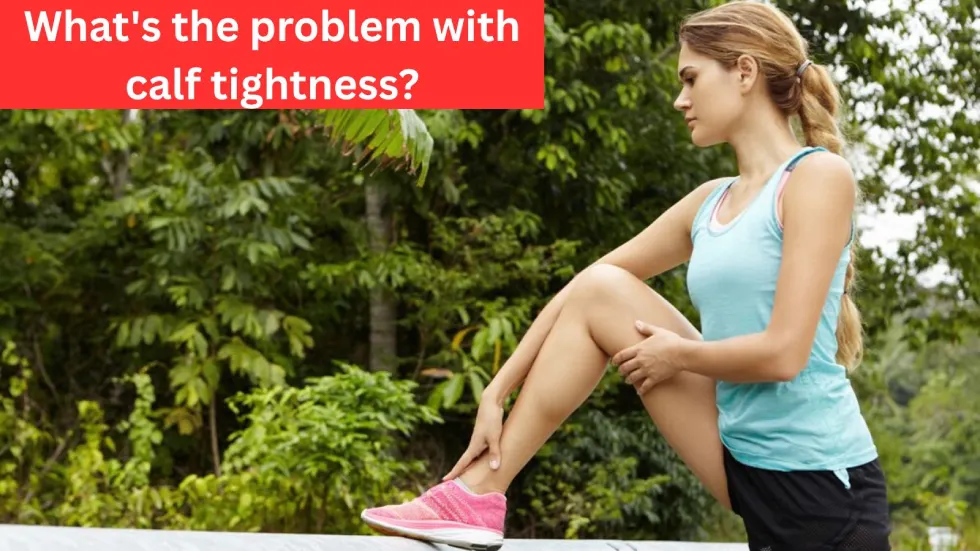
What’s the problem with calf tightness?
When your calves are tense, they may feel tight, hurt, and painful, leading to more significant problems. You might get other aches and pains and have trouble with your form at the gym if your calves are tight.
Tight leg muscles can lead to Achilles tendonitis, shin splints, knee pain, and plantar fasciitis. This is because these short muscle fibres affect other joints and tissues. Knee pain can be caused by tight legs pressing on the back of your knee. If your legs are tight, they can pull up on the fascia, connective tissue, and bottom of your feet; inflammation can cause plantar fasciitis.
Legs that are too tight can also damage the squat form. People may think it’s their hips or that they’re not strong enough when they can’t get into a deep squat, but it could be tight calves.
This is why: You can’t dorsiflex your ankles if your legs are tight. The action is called dorsiflexion, when your toes move closer to your shin. This movement is the opposite of plantar flexion, which means pointing your toes. When you get deeper into a squat, the motion makes your heels lift off the floor. You lose balance and can’t go any lower. (Being able to move your ankles also helps.) Your glutes and hamstrings aren’t getting as much use as they could be if you can’t squat low enough.
When such an event occurs, the kinetic chain instantly fractures from the bottom up, placing you in a vulnerable position.
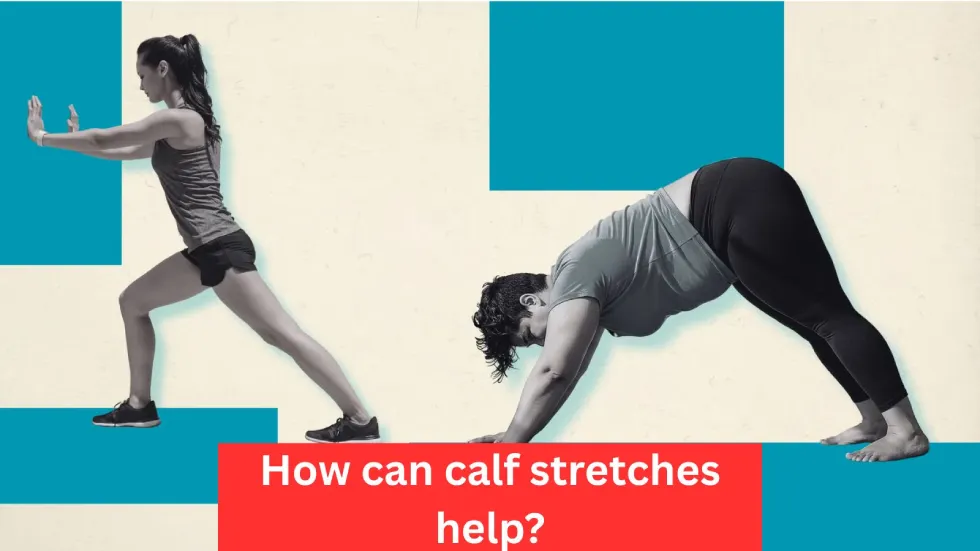
How can calf stretches help?
Static stretches (held in place) can make a big difference in avoiding or lessening leg tightness because they help loosen up the deepest parts of your muscles.
The American College of Sports Medicine says to hold a static stretch for 15 to 30 seconds and do it three to five times on each side of the body. But what matters most is holding it until you feel a deep, satisfying stretch. To get more blood to the muscles, do some light exercise first, like a three- to five-minute walk around the house. The technique will help you get deeper into the stretch and keep you from hurting yourself.
Dynamic calf stretches can also improve your mobility and flexibility. These are stretches that involve physical movement. Don’t think so; include bodyweight squats and lunges in your warm-up to stretch your calves. Some calf movements, like calf raises with dumbbells or just your body weight, like single-leg calf raises, can also help. Working out your calves can also strengthen them, which suits your lower body power.
Effective Calf Stretches
Add a few of these to your regular stretching routine to help keep your legs feeling loose. Do them the next time your calves feel tight. Should your tight calves escalate into persistent pain or discomfort, seek the assistance of a physical therapist or other healthcare professional. They can help you figure out what’s wrong with your body and why you’re hurting and give you personalized stretches to help you feel better.
1. Downward Dog
- Put your hands right under your shoulders and start in a high plank.
- Moving your weight back, press through your fingers and hands to bring your butt to the ceiling. This posture will make your body look like an upside-down V.
- Hold this pose, and remember to breathe!
- Push your heels toward the floor for an excellent calf stretch from this yoga pose. To work those muscles in the lower body, bend your knees a little and keep pressing down on your feet.
2. Downward Dog With Foot Pedal
- Put your hands right under your shoulders and start in a high plank.
- Moving your weight back, press through your fingers and hands to bring your butt to the ceiling. This posture will make your body look like an upside-down V.
- Press the other foot’s heel into the floor as you lift one foot off the ground. Turn the motion around and pedal in the same way on the other side. Carry on pedalling
3. Seated Calf Stretch With a Resistance Band
- Lay down on the ground and spread your legs apart.
- Use a resistance band or another tool to wrap it around one foot while holding both ends with both hands.
- Pull your toes toward your shins slowly until you feel your calf stretch.
- Do it again on the other side.
- Bands are a beneficial way for people with tight hamstrings and calves to improve their range of motion. A yoga strap, a towel, or something else can work if you don’t have a resistance band.
4. Single-Leg Heel Drop Stretch
- Place the balls of your feet on the edge of your step as you stand.
- One leg should be lowered to the ground. Try not to put too much weight on your other leg.
- Do it again on the other side.
- Slide your feet back and forth slowly, or lower them to the ground and lift them up and down for a more active stretch.
- You can perform this stretch on a step, a sturdy box, or the edge of a machine and use gravity to assist you.
5. Inchworm
- Keep your arms at your sides and your feet hip-width apart.
- Put your hands on the floor and bend over at the waist.
- Take a deep breath in and out as you walk your hands forward into a high plank position. Keep your core, legs, and butt tight. In the high plank, take a second to rest.
- Bring your hands back to your feet and stand up to start over. That’s one rep.
6. Forward Fold
- Place your feet together, back straight, chest high, and your eyes straight ahead. Keep your hands at your sides.
- As you breathe, roll down slowly, bringing the top of your head toward the floor. Begin by getting your chin to your chest. Imagine moving each spine individually as you slowly fold your chest toward your thighs.
- When your feet are forward, you can either wrap your fingers around your big toes, clasp your other hand around your other arm, or press both hands gently against the floor.
- If you can’t touch the floor, place your hands on a box or yoga block. You can also bend your knees more.
7. Calf Raise
- Place your feet hip-width apart on a flat surface so your toes point straight ahead.
- Feel your calf muscle tighten as you lift your toes off the ground. Then, lower your heels to the floor. That’s one rep.
- Repeat for desired repetitions.
8. Toes on Wall Stretch
- Set yourself up so you have one foot close to the wall and another about a foot away. Face the wall. To help yourself, put your hands on the wall.
- Put your toes against the wall and your front foot close to the wall. So you can feel the stretch along the bottom of your front leg. Put your weight on your front foot.
- Hold for a specific time, then switch sides and do it again.
- Ensure your front heel stays firmly on the floor to get the most out of this calf stretch. Furthermore, wear sneakers so you can keep your grip on the wall.
9. Lunging Calf Stretch
- Face a wall and stand a few feet away from it. You are not near a wall; you can still perform the exercise. You can do the exercise with your hands on your hips instead.
- Support yourself by putting your hands on the wall. Then, take a small step back with one foot, bending your front leg but keeping your back leg straight.
- Put your back heel down on the ground and lean into the wall. The stretch will be more substantial if you spread your feet farther apart.
- Do it again on the other side.
- Make it more engaging by moving your foot around after you’ve held the stretch to hit different areas for a while.
10. Standing Bent-Over Calf Stretch
- Stand with your feet spread out.
- As you bend your back knee and keep your front knee straight, bend your front knee and grab your front foot under your toes.
- Feel the stretch in your calf as you slowly pull up on your toes.
- Do it again on the other side.
- This stretch works on the dorsiflexion of the ankle and the hamstrings, benefiting the whole posterior chain.
11. Half-Split Stretch
- Begin by getting on your knees with your left leg fully stretched out in front of you and your right knee under your right hip. You should bend your left foot.
- Move your hands next to your left leg until the back of your left thigh feels stretched.
- Wrap your left leg around your middle. If you think a pull behind your left knee, bend it slightly. It should also help you feel the stretch in your calf if you bend your knee.
- Hold this pose for a while, then do it again on the other side.
- This pose stretches the hamstrings and loosens up tight calves.



